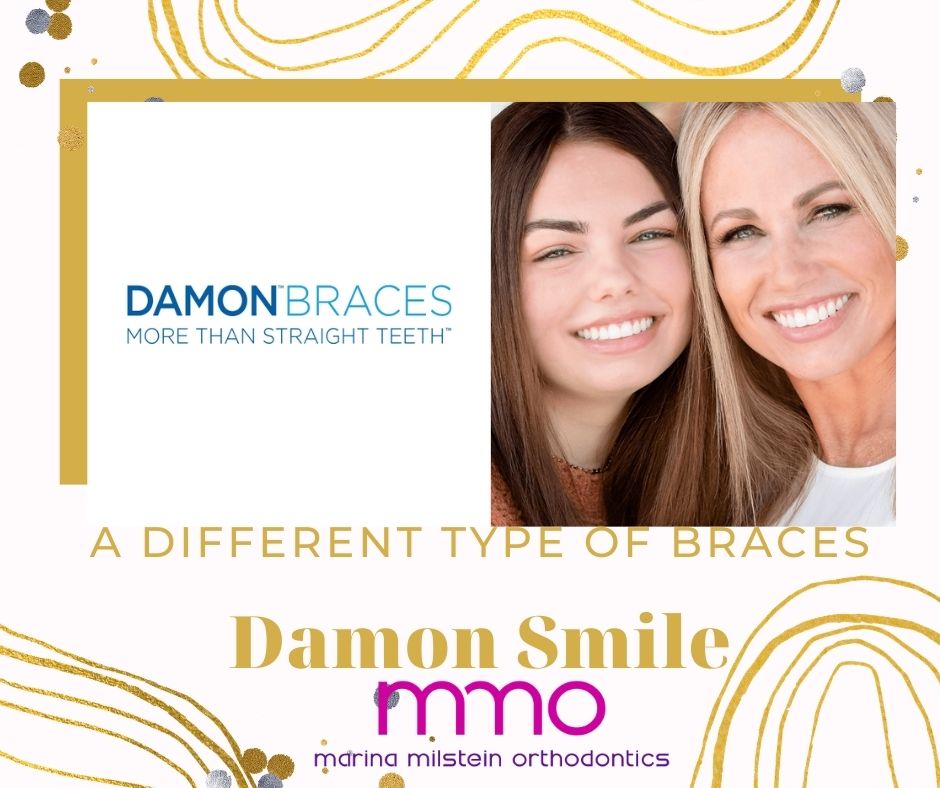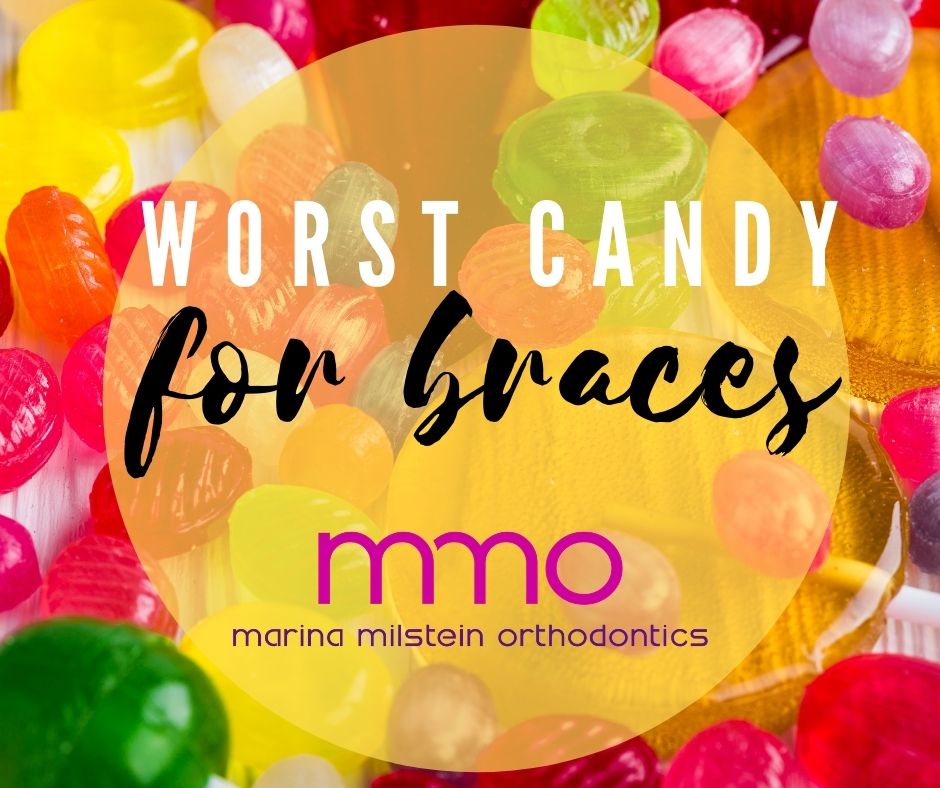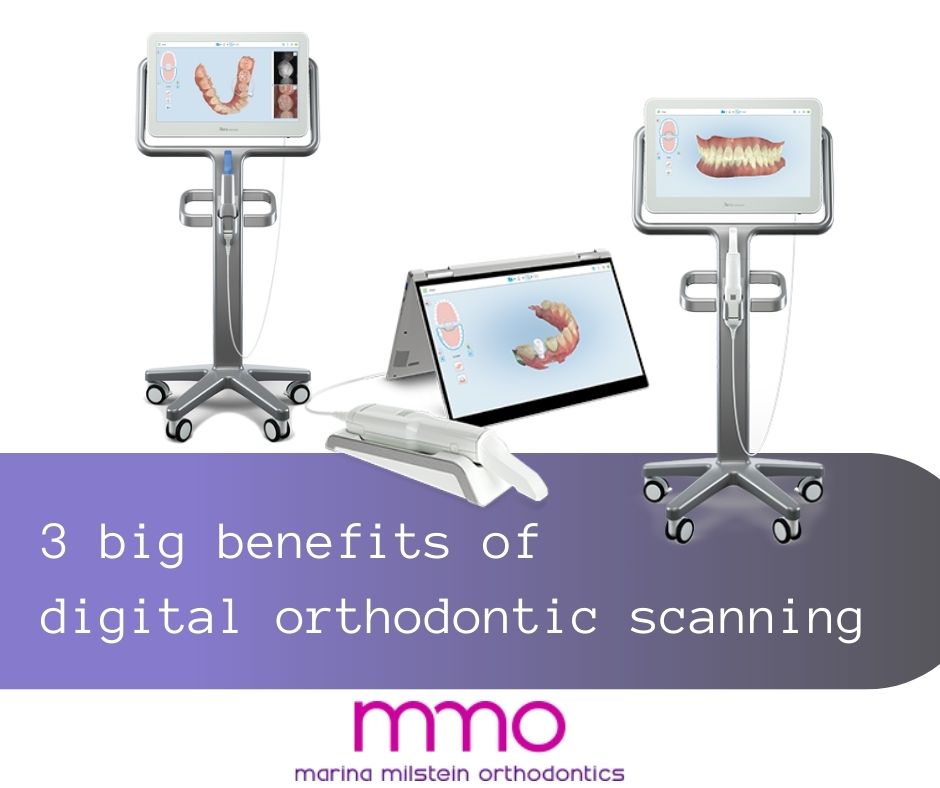November 16th, 2020

Our Granite Bay orthodontist is known for providing a variety of smile options like traditional braces and Invisalign. But one type of orthodontic system you may not be familiar with is Damon Smile self-ligating braces.
What are Self-Ligating Braces?
Traditional orthodontics use special ligatures and elastics (bands) to hold things in place. Damon Smile is different! Instead of a tie to keep your archwires secure, these braces utilize a trap-door mechanism that allows the archwire to float just inside of the bracket against the tooth.
Essentially, Damon Smile provides:
- Less tension
- Improved comfort
- Advanced technology
- Fewer adjustments
- Discreet appliances
- Clear bracket options
…and sometimes, faster results than other types of braces or aligners (depending on your needs.)
By eliminating elastics, there’s less pressure placed on specific teeth. And in turn, that design facilitates a more comfortable experience for the patient. When tooth movement occurs, the archwire simply glides inside of the Damon bracket instead of creating additional tension against it.
Damon Braces: Great for Adults and Teens Alike
Damon Smile orthodontics feature lines of appliances for children and adults. Damon Clear is one example; these self-ligating brackets are tooth-colored and semi-translucent, allowing them to blend in with your smile. Even the archwires feature technology that’s extremely aesthetic. If you’re a busy professional or just prefer to go with a more conservative looking type of braces, a Damon system might be right for you!
Concerns About Comfort?
Orthodontic aligners and braces rely on a small amount of pressure in order to move your teeth effectively. But too much tension — especially in cases of severe crowding or tooth misalignment — can lead to unnecessary discomfort. Damon Smile braces bridge the gap and provide a gentler experience for our patients concerned about comfort.
Find out if Damon self-ligating orthodontics are right for you. Call Marina Milstein Orthodontics today to reserve a consultation.
November 1st, 2020

If you’re like most families in Granite Bay, you’ve probably got a giant stash of Halloween candy that will last you from now until Thanksgiving (if not Christmas.) And if you’re a parent who occasionally sneaks a piece from your child’s trick-or-treat bucket, here are some candies that could potentially be a hazard to orthodontic appliances or other dental work.
Worst Candy for Braces
A lot of candy is sticky or hard enough to break and pull braces off of teeth. If you’re not sure which ones you need to weed out or swap with something safer, here are some things to look for:
Jawbreakers or Other Hard Candy — It can be incredibly tempting to bite down into them. The pressure can pop brackets right off your teeth.
Sticky Caramel or Taffy — If it could get stuck to your hand, shirt, or a piece of furniture, it’s too sticky to eat with braces. But not only that, the sticky texture could pull out older restorations like fillings or crowns.
Homemade Popcorn Balls, Candy Apples, etc. — We know you love grandma’s recipe but wait until the braces finally come off before you give in to the temptation.
So, What Candy CAN You Eat?
Chocolate is one of the “least bad” types of sugary sweets you can indulge in over the holidays. Since it quickly melts in your mouth, your saliva naturally washes the residue away.
Milk chocolate and dark chocolate are excellent choices. If you opt for a candy bar with nuts, be careful not to bite down on it. Instead, break it into bite-size pieces and just let it melt on your tongue.
Broken Bracket? Call Our Granite Bay Orthodontist
Even if you stayed away from hard, sticky candy over Halloween, accidents happen. Call Marina Milstein Orthodontics today to schedule an appointment!
October 15th, 2020

A typical adult dentition (set of teeth) is made up of four different tooth types: incisors (front cutting teeth), canines (also called cuspids or “eye teeth”), bicuspids/premolars, and molars. The canine teeth have exceptionally long roots and are predominantly used for tearing firmer food textures. There are only four of these teeth, with one positioned at each corner of the mouth.
Unfortunately, sometimes those eye teeth can become wedged or impacted down inside of the bone and gums. When that happens, they tend to get caught against the adjacent teeth. They don’t erupt or may start to partially erupt quite high on the gum tissues (above your other teeth.)
Since canines are typically one of the last sets of teeth to erupt, you may not notice there’s a problem until your child is around 12 or 13 years old. In the meantime, you can watch for some of the following risk factors to prevent major orthodontic concerns as your child develops:
- A narrow arch shape
- Crowding in their other teeth
- Previously crowded baby teeth
- Premature loss of a baby tooth near that space
- A family history of impacted teeth
How We Can Help
Fortunately, there are ways to address impacted canine teeth and bring them back down into alignment with their neighbors. In the best-case scenario, an early orthodontic screening well before the eruption window can help you plan ahead. Depending on your child’s age and the development of their impacted cuspid, we can choose to uncover the tooth, allowing it to erupt normally, or affix an orthodontic appliance to it and guide it into place.
Granite Bay Impacted Tooth Treatments
Our experienced Granite Bay orthodontist has worked with numerous cases involving impacted canines over the years. We encourage you to book a brief consultation to learn more about how we can help!
October 1st, 2020
 Instead of taking physical impressions of our patients’ teeth, we use a state-of-the-art digital orthodontic scanning tool called iTero.
Instead of taking physical impressions of our patients’ teeth, we use a state-of-the-art digital orthodontic scanning tool called iTero.
Enhanced Comfort for Our Patients
Conventional dental impressions use bulky trays that are filled to the brim with a gooey-textured putty material. Even if the texture itself doesn’t bother you, the tickling sensation at the back of your throat may set off your gag reflex.
But with a digital impression scanner, we can capture all of the same information with a small imaging wand. No putty or trays are required!
Impeccable Accuracy for Treatment Planning
Thanks to today’s 3D CAD/CAM imaging technology, we can use digital dental impressions to virtually “move” your teeth inside of a computer program. That’s not possible with traditional dental impressions. More often than not, our Invisalign candidates prefer to preview their projected treatment outcome before we ever fit them with their first set of aligners. You can have a good idea of what to expect even if you’re not ready to jump headfirst into orthodontic treatment.
Efficient Care
Traditional stone models of teeth are easily broken or chipped. They’re also bulky, making them difficult to store for an extended period of time. If you lose or misplace an orthodontic retainer or another device, we can use your digital scan to recreate a new one without you even having to step foot in the office!
The scan requires no extra planning or cleanup. We can take your digital impression while you simply sit back, relax, and open your mouth.
The iTero Difference
iTero digital orthodontic scanning shortens the amount of time you spend in our Granite Bay orthodontic office, makes your visit more comfortable, and improves the level of care we can provide. If you’re putting your orthodontic consultation off because of time commitments or the thought of an uncomfortable tickle in your throat, come experience the iTero difference for yourself!




 Instead of taking physical impressions of our patients’ teeth, we use a state-of-the-art
Instead of taking physical impressions of our patients’ teeth, we use a state-of-the-art  Website Powered by Sesame 24-7™
Website Powered by Sesame 24-7™